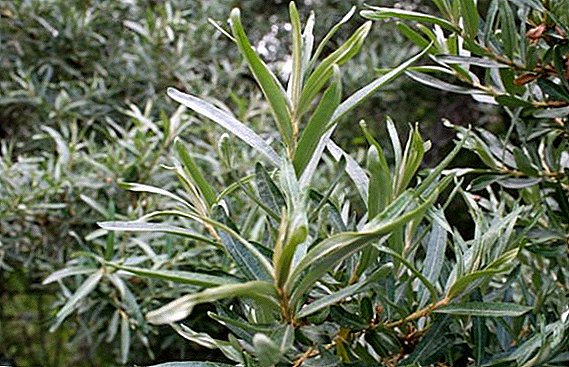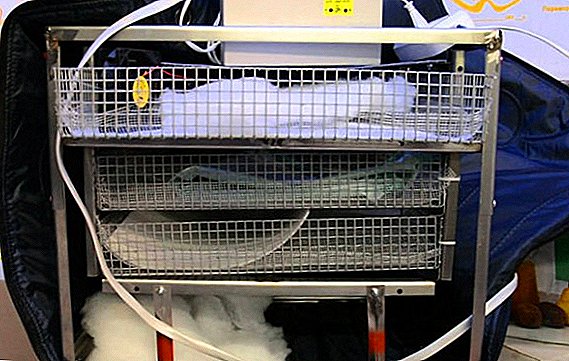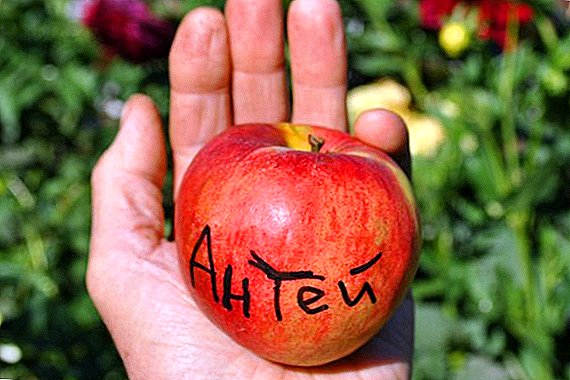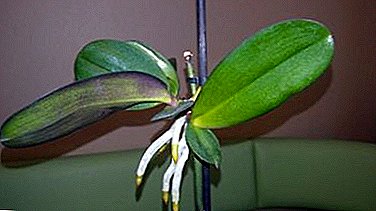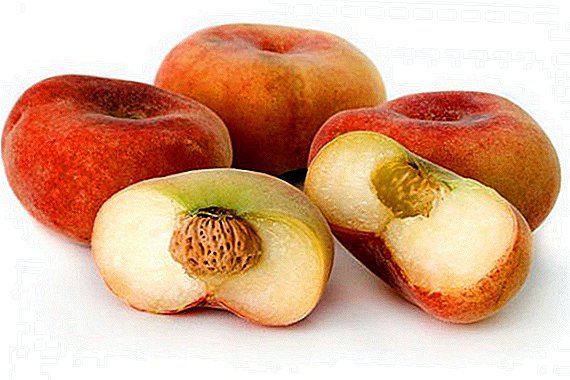
Bright flowers and carved fancifully colored leaves of begonias are able to please the eye all year round, for this it is necessary to create comfortable conditions for the plant. One of the key points in the cultivation of begonias is the choice of the right pot and soil during planting. This article will tell you about the features of the root system of begonia, the soil needed for its growth and flowering, the rules for watering, the transplanting process and what kind of pot is needed for a flower and how to pick it up.
Root system features
Depending on the variety of begonias, its roots can form tubers, rhizomes, or the usual branched root system. In any case, root growth does not occur deep into the soil layer, but in breadth, parallel to its surface.
The root system of begonias is very gentle, it is easily injured, so you need to be extremely careful when transplanting. It is also important to prevent the accumulation of moisture in the substrate, as this leads to decay, this is especially dangerous in the winter, when the air temperature drops significantly (how to keep begonia in winter at home?).
- How and what to feed begonia? General rules for fertilizer application.
- How to care for begonia after buying at home?
- What does begonia growing in a pot need? Rules for caring for a flower growing in the home.
- How to grow garden begonia in the open field?
What soil is required?
Begonia suitable light loose substrate with low acidity and a large supply of nutrients. Special soil, optimally suitable for growing begonias, can be purchased at almost any flower shop. If desired, the correct composition can be made independently, there are several recipes:
- sand, turf soil and leaf earth in the ratio of 2: 1: 2 (this composition is well suited for the tuberous begonia);
- part of the turf land and 2 parts of peat, humus and leafy land (option, the most appropriate to the needs of the royal begonia);
- 1 part of sand, humus and peat and 2 parts of leafy ground (substrate for the royal begonia).
Important! If the substrate is mixed manually, it must be sterilized before planting. This will help avoid the defeat of pathogens.
Watering rules
 Watering begonias needs to be adjusted depending on the time of year (how to properly grow, water and care for begonia so that it blooms longer, read here). Useful recommendations. In the spring, summer and early fall, the plant requires intensive moisture 2-3 times a week, starting from October-November it should be reduced to 2-3 times a month.
Watering begonias needs to be adjusted depending on the time of year (how to properly grow, water and care for begonia so that it blooms longer, read here). Useful recommendations. In the spring, summer and early fall, the plant requires intensive moisture 2-3 times a week, starting from October-November it should be reduced to 2-3 times a month.
Water should be at room temperature, well settled. (at least during the day), without impurities. It is important to make sure that with plenty of watering the water does not accumulate in the pan.
Despite the fact that the plant requires high humidity (60-80%), it is not recommended to spray and moisten the leaves, as this leads to the development of various diseases, such as powdery mildew.
To increase the humidity of the air is best to use special devices.Also for this purpose a pot with begonia can be put in a tray with wet claydite and add water as it evaporates.
What pot is needed?
When planting begonias, preference should be given to wide low pots, the diameter of which exceeds their height by at least several centimeters. This condition is associated with the peculiarities of the formation of the root system, which prefers to develop in breadth. This form of the pot will also allow the substrate to be well ventilated and provide the roots with the necessary amount of oxygen.
Choose the right size
In which pot plant a young plant? The first container for a young begonia grown from a cutting or leaf should not exceed 5-6 cm in diameter. Approximately in half a year, when the plant is fully rooted, it can be transplanted into a more spacious pot with a diameter of about 10-12 cm. Further transplantation is performed as needed (but at least once every 2-3 years), with each subsequent capacity should be one third more than the previous one.
Tank preparation
First of all, the pot must be thoroughly washed and disinfected; for this purpose, a solution of potassium permanganate can be used, such treatment guarantees the absence of pathogens and will save begonia from diseases in the future.
To maintain the required level of substrate moisture, It is desirable that there would be several drainage holes in the pot, just do not forget about the drainage layer, which must fill at least a quarter of the total pot.
How to plant a plant?
 Regardless of whether it is a question of the first planting of a young plant or of a planned transplant of an already grown one, it is important to take care and follow certain rules:
Regardless of whether it is a question of the first planting of a young plant or of a planned transplant of an already grown one, it is important to take care and follow certain rules:
- Place a drainage layer (for example, expanded clay) in the container prepared for planting.
1-2 cm of charcoal can be put on top of the drainage layer, which will provide additional protection for the roots against moisture overload.
- Next, pour a small amount of substrate (the amount is determined depending on the total volume of the tank and the size of the transplanted plant).
- Carefully remove the begonia from the old pot. If it is easy to remove the flower, it does not work out so as not to damage the shoots and roots, you can put the pot in a container with room temperature water for a while. After 15-20 minutes, the substrate will absorb moisture and it will become much easier to free the begonia from the pot.
- Trying not to damage the roots, remove the excess of the old substrate and place the begonia in the center of the new pot.
- Cover the flower in a circle with the soil, not priminaya and not tamping, so that to the top edge of the pot remained about 1 cm.
- Liberally pour. If necessary, add a small amount of the substrate, since as a result of watering it can sink.
Attention! To restore the damaged root system and speed up the process of plant adaptation after planting, you can water it with a solution of root or succinic acid. Fertilizing in the first months after transplantation is not recommended.
More information about how and what to feed the begonia, you can find here.
We invite you to watch a video on how to transplant begonia:
Photo of indoor flower
Then you can see what begonia looks like in a pot in the photo.





Why is it important to choose the right landing tank?
- The size. As mentioned earlier, an excessively large pot would rather harm the flower, since the root system will not have time to absorb water, which will inevitably lead to over-wetting of the substrate and the appearance of fungal diseases and mold. If the size is chosen correctly, already literally in 3 months the begonia can fully adapt and start blooming.
- Material. Plastic pots are usually containers with a lower price, but they contribute to the greenhouse effect, which can lead to overheating of the root system. This is especially dangerous in the summer. Also, unlike ceramic ones, they remove moisture worse and can contribute to its accumulation in the soil.
- The form. Too deep containers for begonias are not suitable, as the plant's root system tends to maximize the amount provided to it. Taking into account the peculiarities of root growth, which prefer to crawl directly below the surface, the growth in depth will take a lot of energy from begonia, which will lead to a slowdown in the growth of the aerial part and will become an obstacle to flowering.
Properly executed planting begonias, well-chosen pot and substrate - a guarantee that it successfully established itself and in just a few months will please the owner with its bright charming flowers.




